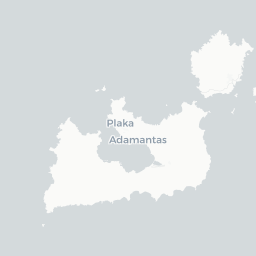






Melos Survey 2002
Survey: Systematic fieldwalking survey
A team from the University of Glasgow undertook a field-walking survey, to locate sites where industrial minerals were mined and processed, particularly in the Classical/Roman period. 'Mining activity' was defined as the presence of caves, tunnels or adits within the white rock, with the possible presence of mining waste (of all types) as well as pottery, as additional criteria. It soon became evident that the landscape has an abundance of rock-cut features, which present a complex picture, but 'Classical/Roman' mining sites could be identified from pottery similarities with Ayia Kyriaki and similar sites. The survey produced an unexpectedly rich level of information. We may highlight: (a) an important site on the western sector of Paleochori bay, perhaps the industrial sector of the emporia at Paleochori, where there might be evidence for the use of geothermal activity in the processing of industrial minerals; (b) a villa site with fine wares beside a locality where five fragments of the so-called sulphur moulds, with the stylised ivy leaf and initials (of the Athenians), were found; (c) a further possible special purpose site, previously unrecorded; and (d) the abundance of obsidian scatters denoting sites dating potentially to the Late Neolithic-Early Bronze Age.
Active from 17/09/2002 to 08/10/2002.
Photos-Jones, Dr Effie

